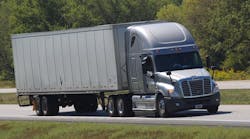Trucking is a highly competitive industry. As a fleet owner, you’re up against tight deadlines and even tighter margins. Not to mention driver turnover, which can be especially crippling to your operation. In order to attract and retain the most dependable talent, fleets must differentiate themselves from the pack. And one of the best ways to do so is by equipping drivers with the latest tools and technology.
Fleet technology is evolving faster than ever. To avoid being left in the dust, it’s important to implement new tools designed to help you succeed. Still, anytime you’re learning something new, it can be hard to know where to start. With that in mind, here are some best practices to follow when you’re ready to update the technology onboard your rigs.
No. 1: Don’t fall for “shiny objects”
Technology is always finding new ways to make things faster, easier and better. The result is that fleet owners today have an almost endless list of add-ons to choose from. But the trucking industry is highly varied. A certain technology may be a good fit for one fleet, but that doesn’t necessarily mean it’s right for all fleets.
Before you decide to implement new technology, make sure you do your research. Take a close look at your operation and define your specific need. It’s easy to get excited about technology, but don’t forget to ask yourself what has value to your fleet. There are many add-ons to choose from, so the key is to find technologies that deliver the biggest return on investment and make your fleet more competitive.
No. 2: Use the information you collect
Sometimes new technology isn’t optional, as is the case with government-mandated electronic logging devices (ELDs). Although change is hard, these devices can give fleet owners valuable insight into their operations. Since you’re using ELDs now for regulatory purposes, you can do yourself a favor by making sure you’re getting the biggest benefit from them.
Fleet owners can use ELDs to their advantage by looking carefully at the information these devices collect. Often, a fleet owner might assume one scenario on the road only to find out the reality is entirely different. With ELDs, fleet owners have a new level of clarity into their operations that was once impossible. As the ELD growing pains subside, the true potential of these devices will begin to show.
Tip No. 3: Be an early adopter
Technology is an unstoppable force. Sooner or later, everything that was once cutting edge becomes commonplace. The key to succeeding with new technology is to be among the first to harness it. This way, by the time the rest of the industry catches up, you’ll already be running smoothly.
Early adoption also carries a competitive advantage when it comes to driver retention. Today’s fleet drivers want to work with top-of-the-line equipment. Not only does outfitting your fleet with the latest technology help drivers be the best at their jobs, it also can help deter drivers from looking for jobs with your competitors.
Tip No. 4: Protect your investment
From operational capabilities to safety on the road, strategically chosen fleet technologies carry many benefits that make them well worth the upfront expense. Once you’ve purchased new add-ons for your fleet, it’s critical to protect the investment you’ve made. Regular preventive maintenance will help keep your rigs — whether they’re tricked out or factory issue — on the road so you can run your operation as efficiently as possible.
Even simple choices like using the right products can help maintain your vehicles — all without setting foot in the repair shop. Cenex Roadmaster XL premium diesel fuel has a complete, balanced additive package that’s been proven on the road to reduce both downtime and maintenance costs. Even with advanced technology, doing the right thing for your rigs can be surprisingly simple.



